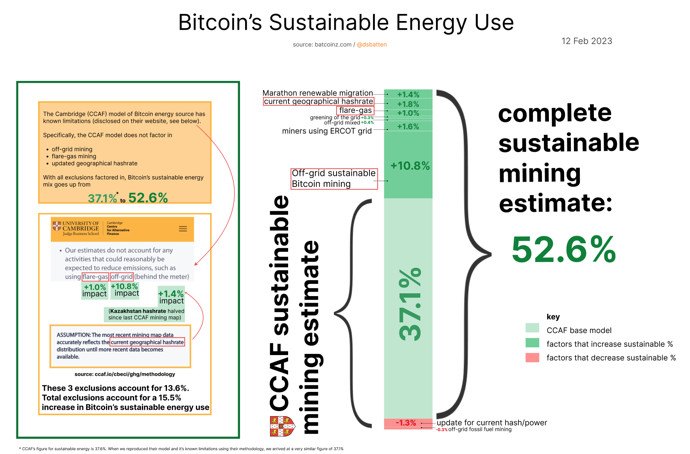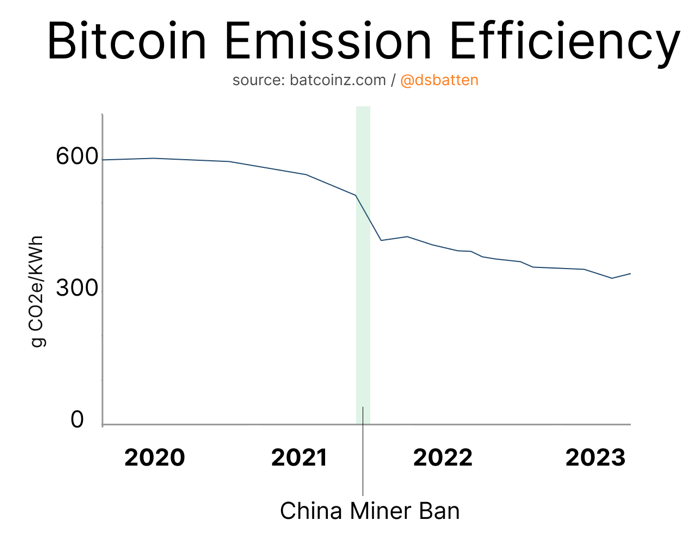Bitcoin mining through clean energy sources on the rise

Bitcoin mining using sustainable energy has been on a steady rise since 2021. The amount of Bitcoin mined through clean sources climbed over 50% a few months ago and offers optimism.
As governments around the world debate the energy consumption of Bitcoin, mining on the network is increasingly coming from sustainable energy sources. The amount of sustainable energy powering mining rose over 50% a few months ago and continues to show signs of becoming a major source.
Entrepreneur and crypto supporter Daniel Batten offered information on energy consumption trends regarding crypto mining. One of the highlights is that Bitcoin has increased its sustainable energy mix to 6.2% per year as of January 2020. He notes that the growth rate is faster than any major industry, while the sustainable mix of 52.6% also outperforms other industries.

The amount of sustainable mining powering Bitcoin mining has steadily increased since 2021. At that time, it was about 35%. It was also around that time that discussions related to Bitcoin’s energy consumption began to take center stage.
Norway is an outstanding performer in this regard, with the cleanest energy powering Bitcoin mining. The country produces about 1% of the total Bitcoin hash rate.
These conversations about Bitcoin’s energy have played a role in regulations, with the European Union (EU) paying particular attention to it. It even suggested that it may shut down Bitcoin mining to provide more energy elsewhere as a result of the stress of the Russian invasion of Ukraine.
China’s ban on mining led to a massive drop in emissions
Emissions from Bitcoin mining have dropped significantly since China banned mining. It fell by about half its value after the ban.

However, there is also massive underground mining in China, according to Cambridge data. About 20% of bitcoin’s total hash rate came from China between September 2021 and January 2022. To combat this, China began offering monetary rewards to encourage individuals to tip them for mining.
Expert challenges Cambridge data on Bitcoin emission trend
Cambridge Data has also stated that emission intensity is on a possible upward trend, but Batten refuted this. He said that over the past three and a half years, emissions have consistently fallen. Cambridge Bitcoin Electricity Consumption Index (CBECI) fossil fuels made up about 62% of Bitcoin’s energy mix in January 2022.
Batten has made it clear that Bitcoin differs from other markets by reducing emissions as its market cap grows, comparing its market cap to GDP. As more companies implement clean solutions, such as a Texas Bitcoin mining company using a wind farm for the purpose, this trend is likely to become prominent.
Disclaimer
BeInCrypto has reached out to the company or person involved in the story for an official statement on the latest development, but has yet to hear back.























